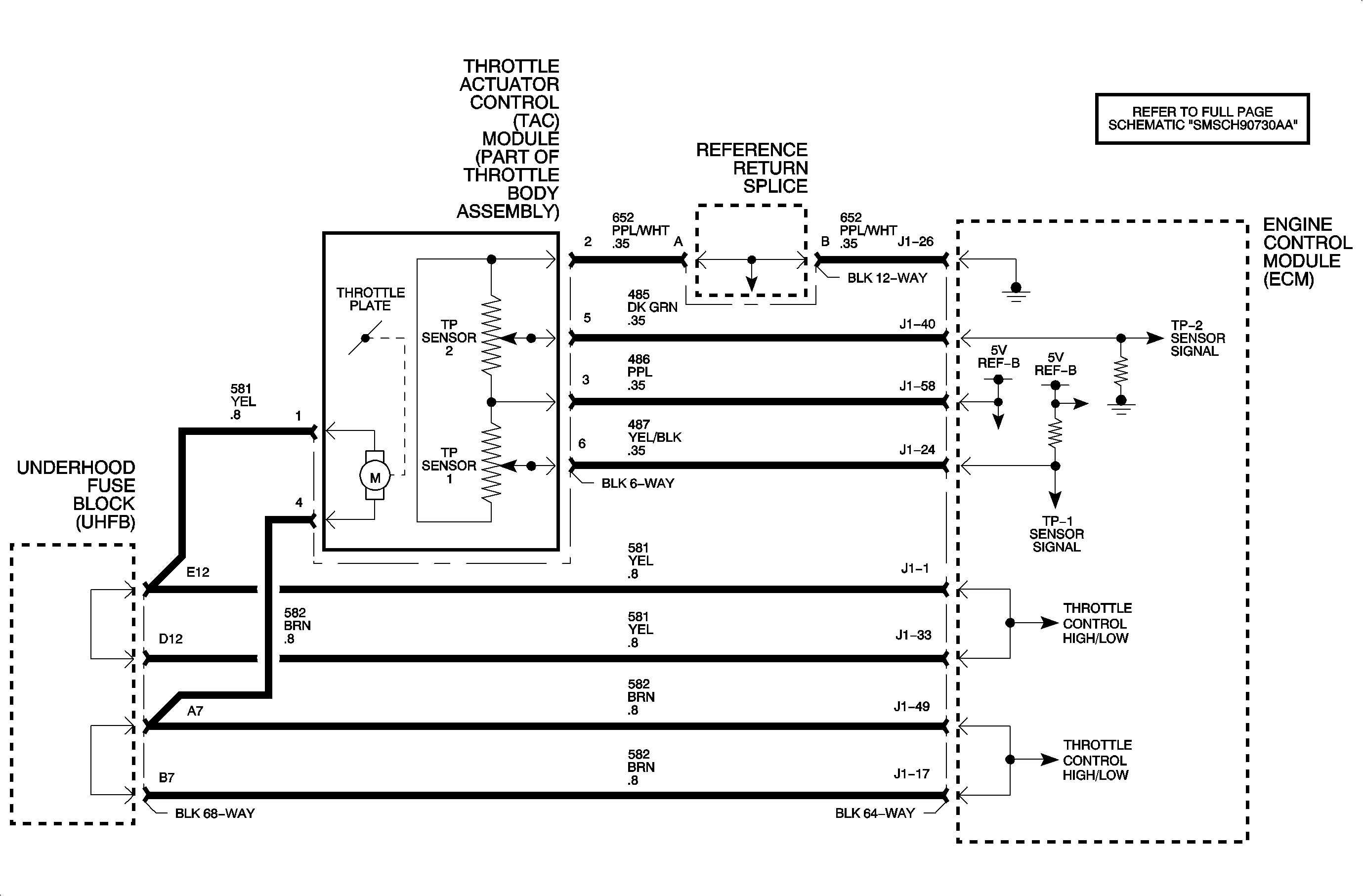
Circuit Description
The throttle actuator control (TAC) module contains 2 throttle position (TP) sensors with a common 5-volt supply, a common ground, and 2 independent signal circuits that vary resistance according to changes in throttle plate position. The engine control module (ECM) measures the signal voltage from each TP sensor, which is a reduced value of the ECM 5-volt reference. The ECM reads the voltage levels from TP sensor 1, then converts the voltage level to a binary number. This binary number is limited to 0.019 volts/bit based on the range of 5 volts. At low throttle angle, the ECM needs to amplify the TP sensor 1 signal in order to obtain a more accurate binary number equivalent for very slight changes in throttle angle. The ECM will monitor the TP sensor 1 amplification output whenever a key-up closed throttle test is performed, once per key-up. DTC P1530 will set if the TP sensor 1 amplification output does not correlate with the TP sensor 1 signal voltage.
Conditions for Setting the DTC
DTC P1530 will set if the ECM has determined that its internal TP sensor 1 amplification stage for low throttle input is not functioning correctly when:
| • | During a once per key-up close throttle test |
| • | The engine speed is less than 250 RPM. |
| • | The vehicle speed is 0 mph. |
| • | The ECT is between 5-100°C (41-212°F). |
| • | The IAT is greater than 5°C (41°F). |
| • | The accelerator pedal angle is less than 15 percent. |
| • | The battery voltage is greater than 10 volts. |
DTC P1530 diagnostic runs during a key-up closed throttle test when the above conditions have been met.
DTC P1530 is a type D DTC.
The malfunction indicator lamp (MIL) will illuminate after 5 seconds.
Diagnostic Aids
Important: If a TP sensor 1 or 2 DTC is set, diagnose that DTC first.
This DTC indicates that the ECM can no longer correctly amplify the TP sensor signal at low throttle angle. Replace the ECM. Refer to DTC P0601 in this section for reprogramming and ECM relearning instructions.
